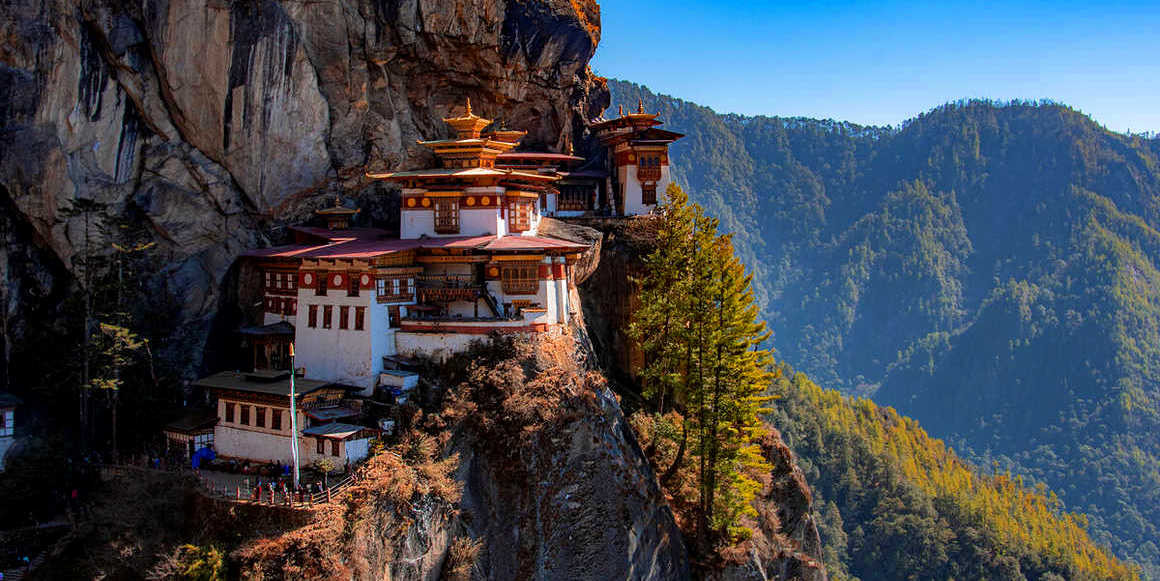Stunning Natural Scenery
Bhutan, often called the "Last Shangri-La," is celebrated for its unparalleled natural beauty, marked by untouched environments and dramatic landscapes. This breathtaking scenery is one of the key reasons travelers worldwide are captivated by this secluded Himalayan kingdom.
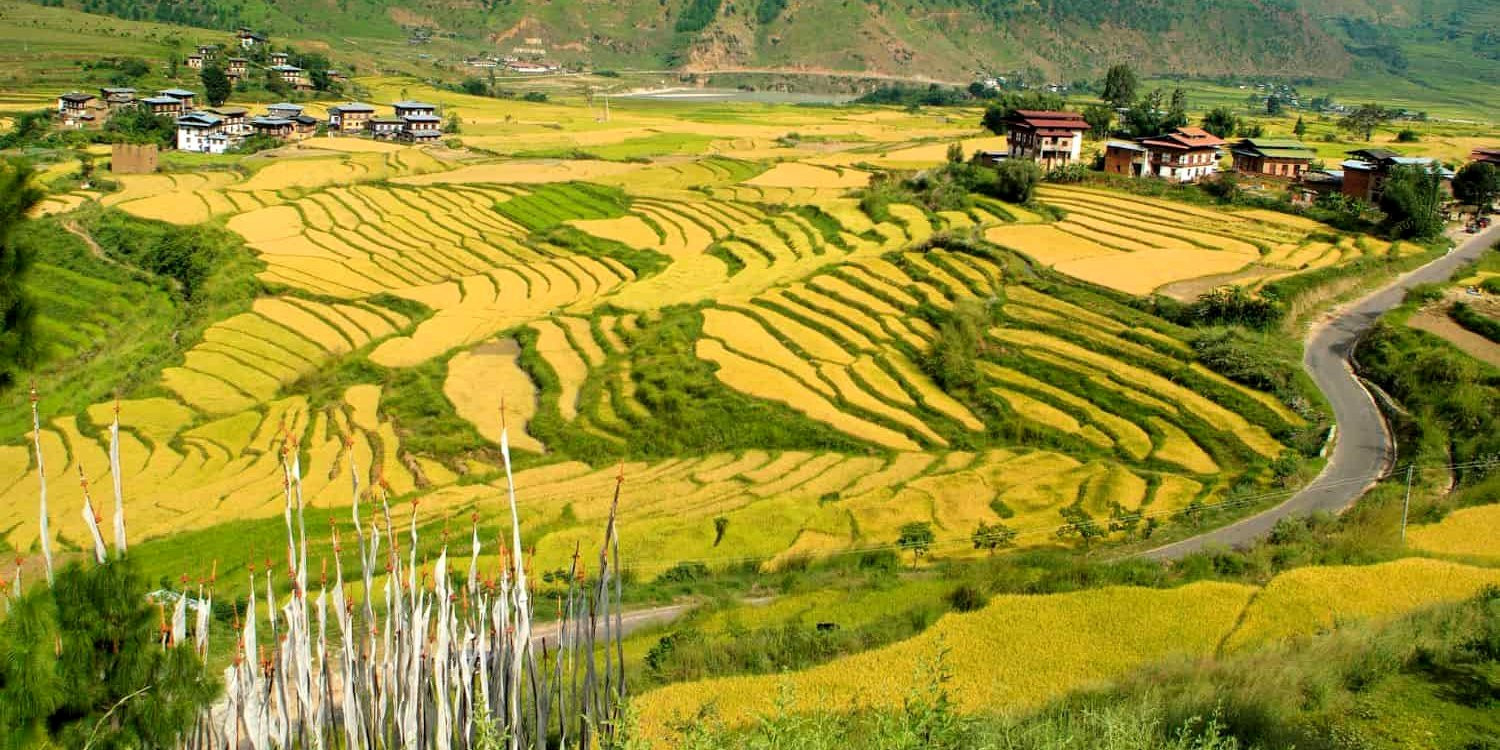
-
The Himalayan Landscape: The Himalayas, Bhutan boasts rugged, mountainous terrain that transitions from subtropical plains in the south to subalpine regions in the north. Its varying elevations provide awe-inspiring views of snow-covered peaks, many of which remain unexplored and steeped in myths. Bhutan's unwavering commitment to environmental preservation—ensuring at least 60% forest cover for all future generations—ensures its landscapes remain pristine.
-
Diverse Ecosystems: Bhutan’s dedication to conservation shines through its rich ecosystems, home to some of the planet's rarest plants and animals. More than 50% of the country is designated as protected land, encompassing national parks, nature reserves, and wildlife sanctuaries. These areas support a vast range of habitats, from dense forests and high-altitude meadows to gushing rivers and tranquil lakes, making Bhutan a paradise for nature lovers and wildlife enthusiasts.
-
Rivers and Valleys: Bhutan’s scenic charm is further enhanced by its rivers, including the Pho Chhu and Mo Chhu in Punakha, the Paro Chhu in Paro, and the Wang Chhu in Thimphu. These waterways flow through verdant valleys dotted with terraced fields, traditional farmhouses, and picturesque villages. Spring and autumn are especially magical, with blooming wildflowers and golden rice fields preparing for harvest.
-
Unique Natural Attractions: Among Bhutan’s exceptional natural highlights is the Phobjikha Valley, a glacial valley on the edge of the Black Mountains National Park. Renowned for its beauty, it serves as the winter refuge for the black-necked cranes. The Chele La Pass, which links Paro to the Haa Valley, offers some of the most spectacular vistas of the surrounding peaks and valleys.
-
Trekking and Exploring: Adventure seekers will find a wealth of trekking opportunities in Bhutan. Trails such as the Jomolhari Loop and the Druk Path Trek lead to remote, seldom-visited parts of the country, offering challenges paired with the rewards of emerald forests, alpine meadows, and crystal-clear lakes. These treks reveal Bhutan’s natural richness, untouched by modernity.
Bhutan’s stunning natural scenery underscores its status as one of the world’s remaining biodiversity treasures. Its preserved environments invite visitors to experience a harmonious blend of human presence and the timeless beauty of nature.
Rich Cultural Heritage
Bhutan’s rich cultural heritage is a cornerstone of its identity, deeply interwoven with its Buddhist traditions and historical legacy. This Himalayan kingdom has preserved its ancient customs, making it an extraordinary destination for travelers seeking an authentic cultural experience that has remained largely untouched by time.
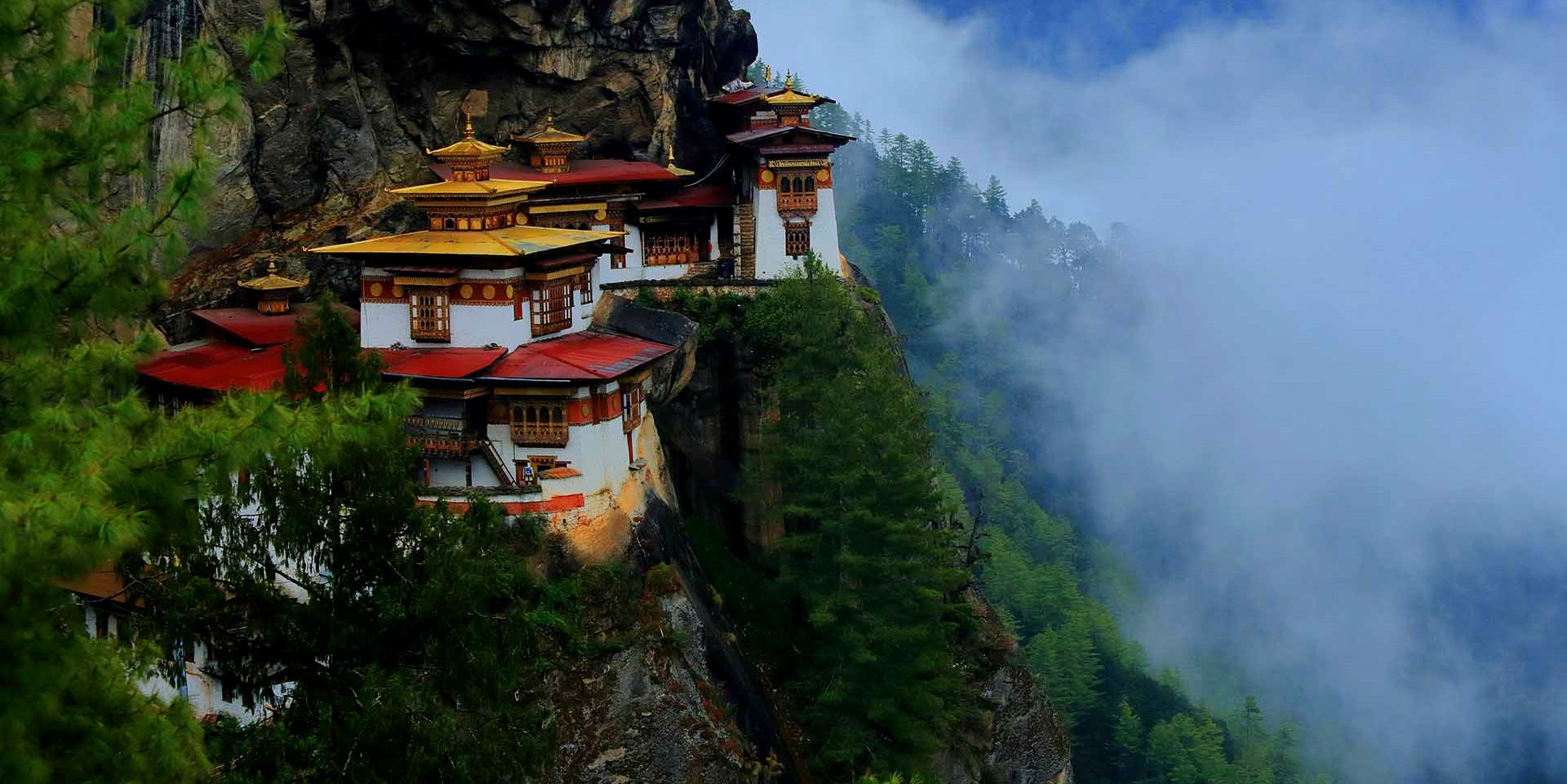
-
Spiritual Traditions: Buddhism is at the heart of Bhutanese life, influencing everything from art and architecture to daily practices and grand festivals. The country’s landscapes are adorned with monasteries, stupas, and fluttering prayer flags that exude tranquility and spiritual depth. Among its most iconic landmarks is the Taktshang Monastery, or Tiger’s Nest, a breathtaking structure perched on a cliff 900 meters above the Paro Valley, symbolizing Bhutan’s spiritual devotion.
-
Dzongs: Dzongs, Bhutan’s unique fortress-monasteries, serve as both religious and administrative hubs. These majestic structures are celebrated for their intricate woodwork, expansive courtyards, and vivid wall paintings depicting Buddhist stories and historical events. Noteworthy examples include Punakha Dzong, famed for its beauty and historical significance, and Thimphu Dzong, the seat of government and religious authority.
-
Traditional Arts and Crafts: Bhutan proudly upholds its 13 traditional arts and crafts, collectively known as Zorig Chusum. These encompass weaving, painting, sculpture, blacksmithing, and more. These crafts are not only livelihoods but also cultural expressions that preserve Bhutan’s heritage. Bhutanese textiles, in particular, stand out, with each region offering distinct patterns and colors, showcasing the artisans’ skill and creativity.
-
Festivals: Living Traditions: Festivals, or techs, are vibrant celebrations that blend spirituality with community bonding. These events feature masked dances, traditional music, and theatrical performances that convey Buddhist teachings. Held in dzongs and monasteries across the country, tshechus draw locals dressed in elegant ghosts and kiras. For Bhutanese people, these gatherings are deeply spiritual, while for visitors, they offer a fascinating glimpse into Bhutan’s living traditions.
-
Language and Literature: The national language, Dzongkha, plays a unifying role in Bhutan’s cultural fabric. Bhutanese literature, rich in religious texts and classical works, reflects Buddhist philosophy and offers profound insights into the nation’s values and way of life. These texts are often shared during public and religious gatherings, keeping the literary tradition alive.
-
Culinary Traditions: Bhutanese cuisine is defined by its bold flavors, with chilies serving as a main ingredient rather than a seasoning. The national dish, Ema Datshi, made with chili and cheese, is a must-try for any visitor. The local diet, featuring meat and dairy, reflects Bhutan’s agricultural practices and the challenges of its rugged landscape, offering a culinary journey as unique as its culture.
-
Preservation Efforts: To safeguard its heritage, Bhutan has enacted measures to protect its cultural traditions. National dress is required in public spaces, and Western influences are carefully managed to prevent the erosion of traditional practices. These efforts ensure that Bhutan’s cultural identity remains vibrant, offering visitors an authentic and immersive experience.
Bhutan’s unwavering dedication to preserving its cultural legacy in an era of globalization is a powerful testament to its respect for history and traditions. For cultural enthusiasts, Bhutan is a treasure trove of profound experiences and timeless beauty.
Vibrant Festivals
Bhutan’s vibrant festivals, or tshechus, are a defining feature of its cultural richness, showcasing colorful and spirited celebrations deeply rooted in Buddhist tradition and mythology. These events are not just religious occasions but also integral to fostering community bonds and preserving Bhutanese heritage. Attending a tshechu offers a unique glimpse into the spiritual and communal life of Bhutan.
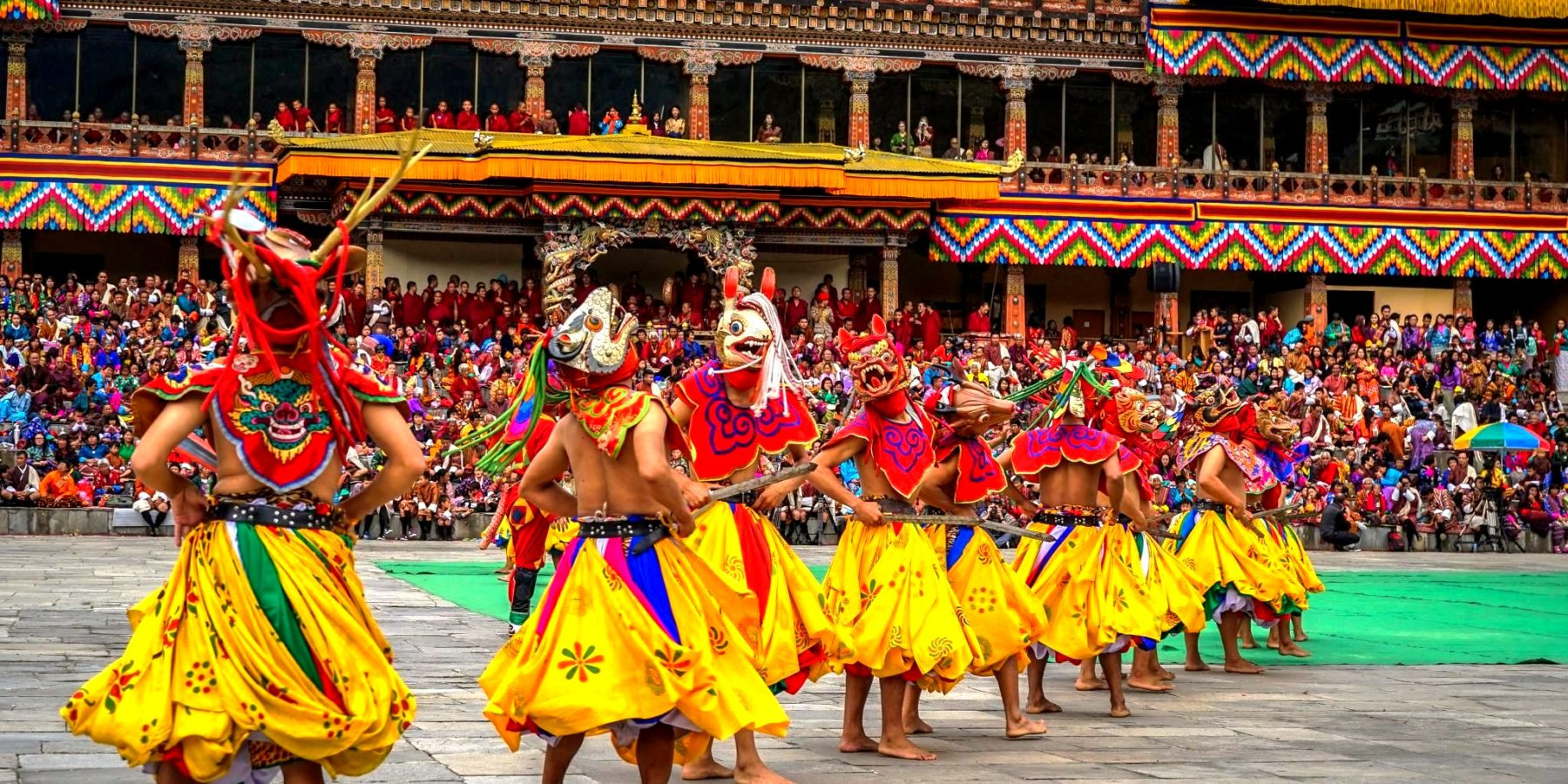
-
Significance of Tshechus: Tshechus are celebrated in honor of Guru Rinpoche (Padmasambhava), the revered saint credited with introducing Buddhism to Bhutan in the 8th century. These festivals, held in monasteries and dzongs across the country, are timed according to the Bhutanese lunar calendar. Through elaborate masked dances and performances, tshechus convey Buddhist teachings, moral lessons, and spiritual blessings.
-
Masked Dances and Rituals: The Cham dance is a highlight of Bhutanese festivals, performed by monks and lay performers in intricate costumes and masks. These dances depict scenes from Guru Rinpoche’s life and Buddhist folklore, illustrating themes of virtue triumphing over vice. The masks, symbolizing deities, animals, or mythical beings, are believed to ward off evil spirits and sanctify the surroundings. Accompanied by traditional instruments such as drums, horns, and cymbals, the dances are both a spiritual ritual and a mesmerizing spectacle.
-
Community Participation: Tshechus are as much about social connection as they are about spiritual devotion. These gatherings bring together people from surrounding villages, all dressed in their finest traditional attire. For locals, it is a time of reunion, celebration, and renewal of communal ties. Attending a tshechu is also considered a way to gain blessings and merit, making it an essential part of Bhutanese life.
Major Festivals in Bhutan:
-
Paro Tshechu: Held in spring at the Rinpung Dzong, this is one of Bhutan’s most famous tshechus. The highlight is the unfurling of the thongdrel, a massive tapestry depicting Guru Rinpoche, believed to cleanse those who view it of their sins.
-
Thimphu Tshechu: Among the largest tshechus, this festival in the capital attracts thousands of people over several days, featuring an array of dances and vibrant displays of traditional crafts.
-
Punakha Drubchen and Tshechu: Known for reenacting a 17th-century battle where Bhutanese forces repelled Tibetan invaders, this festival adds a dramatic historical element to its religious celebrations.
Cultural Insights: For visitors, attending a tshechu is an unparalleled opportunity to experience Bhutan’s culture in its most dynamic form. From the intricate dances and colorful costumes to the collective spirit of devotion, these festivals offer profound insights into Bhutanese life and beliefs.
Preserving Tradition: Bhutan’s dedication to safeguarding its festivals ensures that they remain a vibrant and meaningful part of its cultural identity. These celebrations not only honor the country’s spiritual heritage but also invite visitors to connect with the timeless traditions of this enchanting Himalayan kingdom.
For anyone seeking to understand Bhutan’s soul, attending a tshechu is an unforgettable experience.
Trekking Paradises
Bhutan, with its rugged mountains and untouched landscapes, is a dream destination for trekkers. From trails that challenge the most experienced adventurers to those suitable for beginners, Bhutan offers unparalleled trekking opportunities that reveal the majestic beauty of the Himalayas. Beyond the stunning scenery, these treks offer an authentic glimpse into the traditions and lifestyles of Bhutan’s remote mountain communities.
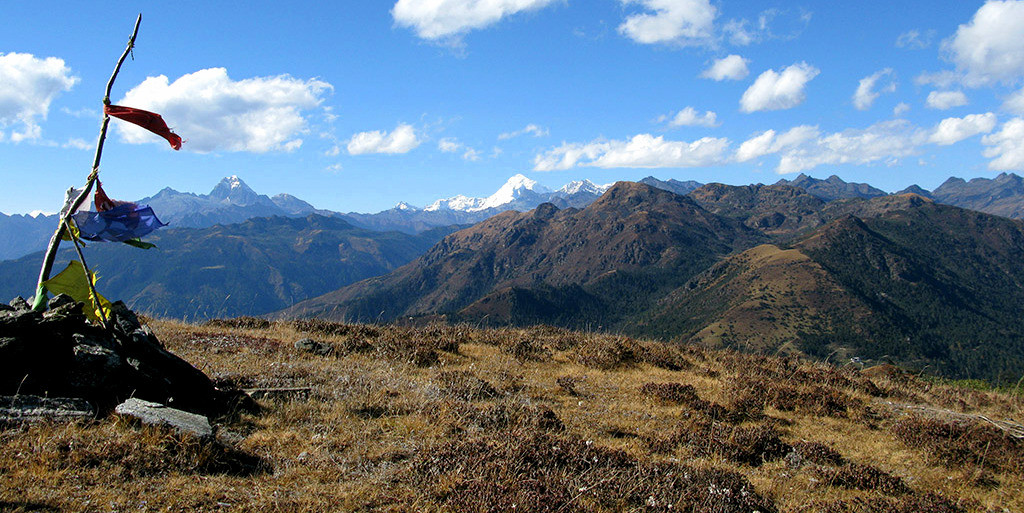
Popular Trekking Routes in Bhutan
-
Jomolhari Trek: Known as Bhutan’s most popular trek, the Jomolhari Trek offers breathtaking views of Mount Jomolhari, the country’s third-highest peak at over 7,300 meters. The trail takes trekkers through diverse landscapes, from lush forests to high mountain passes and alpine meadows brimming with wildflowers. Starting and ending in Paro, this trek takes about 7 to 9 days and is ideal for those seeking a balance of challenge and beauty.
-
Druk Path Trek: A shorter and less strenuous option, the Druk Path Trek connects the valleys of Paro and Thimphu. It provides trekkers with stunning views of the Himalayas, serene mountain lakes, and historic sites like the Phajoding Monastery. This trek lasts 5 to 6 days, making it a perfect choice for beginners or those with limited time.
-
Snowman Trek: Renowned as one of the world’s most challenging treks, the Snowman Trek spans 25-30 days and crosses some of Bhutan’s most remote and elevated regions. With multiple passes exceeding 5,000 meters, this trek is only for highly experienced adventurers seeking the ultimate challenge and reward.
-
Bumthang Cultural Trek: Focused on Bhutan’s cultural heartland, this 3-day trek combines scenic beauty with cultural exploration. Trekkers visit ancient monasteries, temples, and charming villages, making it an excellent choice for those interested in Bhutan’s spiritual and historical richness.
-
Gangtey Trek: A moderate 3-day trek, the Gangtey Trek traverses the picturesque Phobjikha Valley, home to the rare black-necked cranes during winter. The trail offers an idyllic blend of natural beauty and cultural landmarks, making it a favorite for trekkers seeking a serene experience.
What Makes Bhutan a Trekking Paradise
-
Scenic Beauty: Every trail in Bhutan is a feast for the eyes, with stunning views of snow-capped peaks, verdant valleys, and pristine forests.
-
Cultural Immersion: Unlike commercial trekking destinations, Bhutan’s trails wind through remote villages and monasteries, offering trekkers the chance to connect with local traditions and daily life.
-
Environmental Conservation: Bhutan’s commitment to preserving its natural heritage ensures that trekkers experience untouched and well-protected landscapes.
-
Exclusivity: Bhutan’s policy of sustainable tourism keeps its trekking routes uncrowded, allowing for a peaceful and personal journey.
Trekking in Bhutan is more than a physical journey; it’s a profound exploration of nature, culture, and spirituality. Whether you’re scaling high-altitude peaks or walking through valleys rich in tradition, Bhutan offers an experience that lingers long after the trek concludes.
Sustainable Travel
Sustainable travel in Bhutan is a cornerstone of the country's tourism philosophy, reflecting its dedication to protecting the environment and preserving its cultural identity. As a global leader in sustainable tourism, Bhutan seamlessly integrates conservation, community development, and cultural preservation with its unique approach rooted in the philosophy of Gross National Happiness (GNH).
Principles of Sustainable Travel in Bhutan
-
Environmental Conservation: Bhutan is one of the few net carbon-negative nations in the world, producing more oxygen than it consumes. This achievement is largely due to its extensive forests, which cover over 70% of its land—protected by a constitutional mandate. Strict environmental policies ensure the preservation of natural landscapes, wildlife, and biodiversity, making sustainability an intrinsic part of daily life and tourism practices.
-
High Value, Low Impact Policy: Bhutan’s tourism operates under a "High Value, Low Impact" policy, requiring tourists to pay a daily tariff that covers accommodations, meals, transportation, and guide services. This system limits the volume of tourists to prevent overtourism while ensuring that tourism revenue supports the local economy, funds free education and healthcare, and contributes to infrastructure development without compromising environmental or cultural values.
-
Cultural Heritage Preservation: Bhutan emphasizes the protection and promotion of its cultural heritage. Visitors are encouraged to engage with local customs, participate in festivals, and explore cultural landmarks. This approach sustains traditional crafts, ceremonies, and practices while fostering cultural pride and economic benefits for local artisans and performers.
-
Community Involvement: Tourism in Bhutan often involves community-based initiatives, such as rural homestays and locally guided tours. These programs provide travelers with authentic experiences while directly benefiting local populations. This inclusive approach ensures that the economic advantages of tourism are widely distributed and that rural communities play an active role in shaping their tourism offerings.
-
Education and Awareness: Bhutan actively educates both residents and visitors about sustainable practices and the importance of respecting its environment and culture. Visitors are encouraged to learn about local customs and environmental conservation, promoting responsible and conscious travel.
Impacts of Sustainable Travel
Bhutan’s approach to sustainable tourism has far-reaching impacts:
-
It safeguards the country’s pristine natural environments and cultural legacy for future generations.
-
It provides tourists with meaningful, respectful, and enriching experiences.
-
It inspires visitors to adopt sustainability practices in their own lives.
-
It enhances local livelihoods through equitable economic distribution.
Challenges and Opportunities: Bhutan’s success in sustainable travel comes with challenges, such as balancing its strict tourism policies with increasing global demand and addressing the impacts of climate change. However, these challenges also offer opportunities to innovate and further refine its tourism model, potentially serving as a blueprint for other nations striving for sustainability.
Bhutan’s unwavering commitment to sustainable travel ensures that its ecological and cultural treasures remain intact while providing visitors with an unparalleled experience. By prioritizing preservation over profit, Bhutan has established itself as a trailblazer in the global tourism industry, offering a powerful example of how tourism can be a force for positive change and a more sustainable future worldwide.
Friendly and Hospitable People
One of the most memorable and heartwarming aspects of a visit to Bhutan is the genuine warmth and hospitality of its people. Guided by Buddhist teachings that emphasize compassion, kindness, and community, Bhutanese values shine through in every interaction, making visitors feel not just welcomed but truly valued during their stay.
-
The Foundation of Bhutanese Hospitality: Hospitality in Bhutan goes beyond courtesy—it is a way of life deeply rooted in cultural and spiritual values. Central to Bhutanese society are the principles of Tha Dam-Tsi (loyalty and faithfulness) and Lay Jumdrey (the sacred guest-host relationship). Guests are honored with the highest respect, often regarded as divine beings, ensuring that visitors are treated with care and generosity akin to family.
-
Community and Family Life: Family and community form the bedrock of Bhutanese society. Social gatherings, religious ceremonies, and festivals are opportunities for collective bonding, where the Bhutanese exhibit their openness and warmth. Travelers frequently find themselves invited to join these events or welcomed into homes to share a meal, providing a rare and intimate glimpse into daily Bhutanese life.
-
Interaction with Tourists: Tour guides, hosts, and locals go above and beyond to make visitors feel at home. Guides are not only well-versed in Bhutan’s rich history and traditions but are also enthusiastic storytellers who share personal anecdotes and listen to those of their guests. These genuine, personal connections are often cited by travelers as a highlight of their Bhutanese adventure.
-
Safety and Comfort: Bhutan is recognized for its safety, with low crime rates and a stable political environment. Visitors can explore the country with ease, enjoying a sense of security that stems from the Bhutanese people’s mutual respect and trust. This safe atmosphere allows travelers to fully immerse themselves in Bhutan’s breathtaking landscapes and cultural heritage without concern.
-
The Role of Gross National Happiness: The philosophy of Gross National Happiness (GNH), which prioritizes collective well-being over material wealth, is evident in the daily lives of the Bhutanese people. Their focus on happiness, harmony, and cultural preservation is mirrored in how they interact with each other and with visitors, creating an environment of positivity and goodwill that resonates throughout the country.
-
Experiencing Bhutanese Hospitality: Many visitors leave Bhutan with stories of exceptional kindness—such as a lost item returned by a stranger, an invitation to a local celebration, or a guide encouraging a challenging trek. These moments of connection leave a lasting impression, forging meaningful relationships and deepening travelers' appreciation for Bhutan’s culture and people.
The friendliness and hospitality of the Bhutanese people not only enhance the travel experience but also provide a profound connection to the essence of this Himalayan kingdom. It’s a distinguishing quality that sets Bhutan apart, creating unforgettable memories and making it a place that remains in the hearts of its visitors long after they leave.
Unique Culinary Experiences
Bhutan offers a distinctive culinary landscape that reflects its cultural heritage and geographical diversity. Bhutanese cuisine is marked by its simplicity and the prominence of spicy flavors, making it a unique culinary experience for travelers. Here’s a deeper look into the Bhutanese dining experience that combines traditional ingredients with a distinctive preparation style deeply rooted in the country's cultural practices.
-
Staple Ingredients: The primary ingredients in Bhutanese cuisine include red rice, buckwheat, and maize. Red rice, which is grown in the Paro Valley, has a nutty flavor and is slightly sticky, pairing well with other local dishes. Buckwheat is commonly used in the Bumthang region for making noodles and pancakes, while maize is prevalent in the eastern regions.
-
The dominance of Chili and Cheese: The national dish of Bhutan, Ema Datshi, exemplifies the characteristic use of chili and cheese, which are staples in almost every meal. Ema Datshi is made with hot green chilies smothered in a rich, creamy cheese sauce. Variations include adding mushrooms (Shamu Datshi), potatoes (Kewa Datshi), or swapping the green chilies for red ones. The ubiquitous use of chilies not only adds flavor but also warmth, essential in the cool mountain climate.
-
Meat Dishes: Meat, including chicken, beef, pork, and yak, is commonly featured in Bhutanese cuisine. Dishes like Phaksha Paa (pork cooked with spicy red chilies) and Jasha Maru (spicy minced chicken) are popular. Yak meat is particularly favored in higher altitudes and is often dried or turned into jerky known as Sikkam.
-
Beverages: Butter tea, or Suja, is a traditional drink that is an integral part of Bhutanese life. Made from tea leaves, butter, and salt, it serves as a high-energy drink suited to the high altitude and cold weather. Ara, a locally brewed alcoholic beverage made from rice or maize, is another popular choice often served during festive occasions and social gatherings.
-
Farm to Table: Bhutan's approach to food is deeply sustainable, with most families growing their own food and using organic farming methods. This farm-to-table tradition ensures that the food is fresh and environmentally friendly. The government’s push towards organic farming nationwide aims to preserve this aspect of Bhutanese life, promoting health and sustainability.
-
Dining Etiquette: Eating in Bhutan involves a few traditional practices. It is customary to say meshu meshu, covering one's mouth with the hands and saying no a few times before accepting food, reflecting the humility and politeness embedded in Bhutanese culture.
-
Culinary Tourism: Culinary tours in Bhutan can take travelers through a delightful journey of taste and tradition, offering cooking classes, visits to local farms, and meals prepared by local families. These experiences provide deep insights into the Bhutanese way of life, making them not just about consuming food but about learning and engaging with the local culture.
Bhutanese cuisine, with its unique flavors and communal dining experiences, offers more than just sustenance—it provides a window into the soul of Bhutan. For travelers looking to immerse themselves fully in the local culture, indulging in these culinary traditions is a must.
Peaceful and Safe Environment
Bhutan’s reputation as a tranquil haven is well-deserved, offering travelers a unique blend of safety, serenity, and rejuvenation. With its low crime rates, stable governance, and deeply ingrained cultural values, this Himalayan kingdom is an ideal destination for those seeking a peaceful retreat.
-
Political Stability: Since transitioning to a constitutional monarchy in 2008, Bhutan has enjoyed political stability and a harmonious societal structure. The peaceful establishment of democratic governance reflects the nation’s commitment to progress while preserving its traditions. This stability ensures that visitors can explore Bhutan without concerns about political unrest, adding to the country’s allure as a secure destination.
-
Community-Centric Society: Bhutanese society is rooted in Buddhist principles such as compassion, non-violence, and mindfulness, which foster a culture of social harmony and mutual respect. Crime is exceptionally rare, and the community places great value on maintaining peace. Travelers frequently note the warm and welcoming nature of the Bhutanese people, who embody the ethos of kindness and care.
-
Low Crime Rate: Bhutan is among the safest countries in the world, with crime rates consistently low. Its proactive, community-oriented approach to justice emphasizes rehabilitation and reintegration over punitive measures, creating a safe environment for residents and tourists alike. Visitors can confidently explore the country without concerns for personal safety.
-
Natural Calm and Serenity: The breathtaking natural landscapes of Bhutan are a major contributor to its peaceful ambiance. From verdant valleys and dense forests to soaring mountains and serene rivers, the pristine environment offers a sense of escape and tranquility. This connection to nature is deeply ingrained in Bhutanese culture, allowing visitors to experience a harmonious blend of spiritual and environmental serenity.
-
Sustainable Tourism: Bhutan’s "High Value, Low Impact" tourism policy ensures that travel experiences are sustainable and respectful of the country’s cultural and natural heritage. By limiting tourist numbers and emphasizing quality over quantity, Bhutan avoids overcrowding and preserves the peacefulness of its destinations. This thoughtful approach enhances the serene atmosphere, making every visit more meaningful.
-
Health and Well-being: Bhutan’s philosophy of Gross National Happiness prioritizes the well-being of its people and the preservation of its environment over economic growth. This focus on happiness and health extends to visitors, who benefit from the nation’s clean air, organic food, and an overall emphasis on wellness. For travelers, Bhutan offers not just physical safety but also a sense of mental peace and emotional restoration.
Bhutan’s unique combination of stable governance, cultural harmony, and unspoiled natural beauty makes it a sanctuary for those seeking solace. Whether exploring its serene landscapes, engaging with its kind-hearted people, or simply basking in its calming atmosphere, visitors leave Bhutan feeling reconnected, refreshed, and inspired by the peaceful essence of this extraordinary kingdom.
Bhutan: An Exclusive Travel Destination
Bhutan distinguishes itself as a travel destination not only for its breathtaking landscapes and rich cultural heritage but also for its innovative approach to tourism, centered on sustainability and exclusivity. This strategy ensures that each visitor enjoys a meaningful experience while positively impacting both the traveler and the host nation.
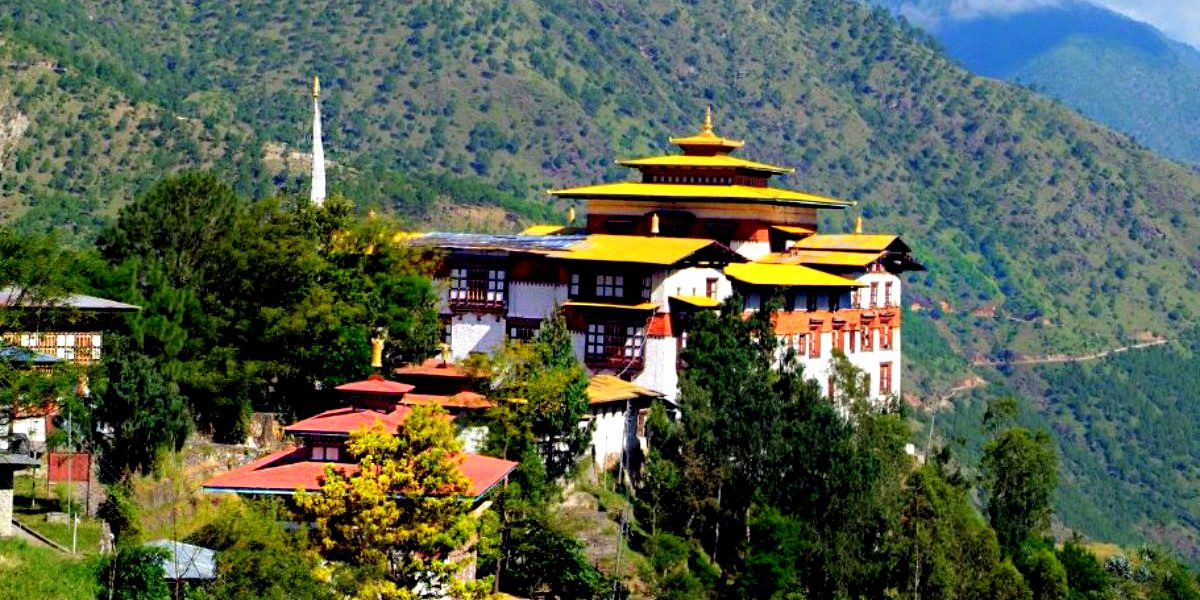
High Value, Low Volume Tourism
Bhutan’s "High Value, Low Volume" tourism policy is the foundation of its exclusivity. Rather than maximizing tourist numbers, Bhutan prioritizes delivering high-quality experiences to a select group of visitors.
-
Daily Minimum Spend: Tourists are required to meet a daily minimum expenditure that covers a visa fee, Sustainable Development Fee (SDF), and expenses for accommodations, meals, transportation, and an official guide.
-
Sustainability Focus: This model supports sustainable development, preventing strain on Bhutan’s infrastructure and environment while ensuring economic benefits.
Sustainable Development Fee (SDF)
A significant portion of the daily tariff, the SDF, is reinvested into Bhutan’s core developmental areas:
-
Healthcare and Education: Funds support free access to quality healthcare and education for citizens.
-
Environmental Conservation: The fee aids in preserving Bhutan’s forests, biodiversity, and cultural landmarks.
-
Community Welfare: It ensures that tourism directly contributes to the well-being of the local population, creating a balanced and equitable system.
Exclusive Experiences
Bhutan’s tourism policy facilitates personalized and deeply immersive experiences:
-
Custom Itineraries: Visitors can tailor their trips to explore what excites them most, from trekking in the Himalayas to engaging with vibrant festivals.
-
Authentic Encounters: Guests can participate in traditional practices, visit remote monasteries, and connect with local communities, ensuring an authentic understanding of Bhutanese life.
Controlled Visitor Numbers
By regulating the number of tourists, Bhutan avoids the overcrowding seen in many popular destinations.
-
Enhanced Visitor Experience: Limited numbers ensure visitors can explore iconic sites like Tiger’s Nest Monastery or Punakha Dzong without crowds.
-
Preservation: Controlled tourism helps maintain the integrity of Bhutan’s cultural and natural treasures for future generations.
Pristine Environment
The low-impact tourism model ensures Bhutan remains a haven of natural beauty.
-
Unspoiled Landscapes: Visitors experience pristine forests, rivers, and mountains free of pollution or excessive development.
-
Eco-Conscious Practices: Bhutan’s strict environmental policies, including carbon negativity, reinforce its status as a global leader in sustainability.
Cultural Authenticity
Unlike destinations that commercialize their heritage for tourism, Bhutan preserves its culture as a living tradition.
-
Genuine Practices: Festivals, arts, and customs are upheld authentically, providing visitors with a true connection to Bhutanese life.
-
Cultural Pride: Tourism supports local artisans, performers, and communities, ensuring traditions thrive.
A Model for Sustainable Tourism
Bhutan offers discerning travelers a rare escape from the commercialized tourist circuit. Its emphasis on high value and low impact ensures:
-
Enrichment: Visitors leave with profound memories of meaningful interactions and breathtaking experiences.
-
Positive Impact: Tourism directly supports Bhutan’s sustainability goals, creating a win-win scenario for both guests and hosts.
In its commitment to exclusivity and sustainability, Bhutan sets a global standard for tourism, offering a destination that is as enriching for the traveler as it is beneficial for the nation. This makes Bhutan a truly unparalleled choice for those seeking a journey of depth, beauty, and purpose.
Ideal Travel Times
Selecting the right time to visit Bhutan can significantly improve your overall travel experience, as each season in the country offers unique sights and activities. The ideal time for your trip depends on your interests and what you hope to explore. Here’s a seasonal guide to help you plan your Bhutan adventure wisely.
-
Spring (March to May): Spring is a fantastic time to visit Bhutan, thanks to its mild weather and colorful landscapes filled with blooming flowers, especially rhododendrons that brighten the hillsides. This season is ideal for trekking, photography, and experiencing cultural highlights like the vibrant Paro Tshechu festival. Clear skies also offer breathtaking views of the Himalayan mountains.
-
Autumn (September to November): Autumn is also a great time to visit Bhutan, with cool, clear weather ideal for trekking and outdoor adventures. The season offers stunning views of the Himalayas and is filled with lively festivals like the Thimphu Tshechu. It's also harvest time, giving travelers a glimpse into Bhutan's vibrant rural and agricultural life.
-
Summer (June to August): Summer in Bhutan coincides with the monsoon season, bringing frequent rain that can make trekking difficult and occasionally render remote roads inaccessible due to landslides. However, the rain transforms the landscape into a lush, green paradise with stunning waterfalls and thriving fields. With fewer tourists around, it’s a quieter time to visit, and you might even spot rare black-necked cranes in the Phobjikha Valley.
-
Winter (December to February): Winter in Bhutan is chilly, but the skies remain clear, providing spectacular views of the snow-covered mountains. With fewer tourists around, it’s a peaceful time to explore. You can also experience cultural events like the Punakha Drubchen and Tshechu festivals without the usual crowds. Just be sure to dress warmly, as temperatures can drop significantly, especially in the mornings and evenings
While planning your trip, consider what aspects of Bhutan you most want to experience. Each season offers something unique, whether it’s the festivals of spring and autumn, the lush landscapes of summer, or the dramatic vistas of winter.
Note: check the dates for specific festivals or events you may want to attend and plan your trip around these to enhance your Bhutan travel experience.
A trip to Bhutan is more than just a vacation; it's a profound journey into a world of natural splendor, rich culture, and mindful existence. Every experience, from hiking untouched Himalayan trails to participating in lively festivals and enjoying the warm local hospitality, is both meaningful and unforgettable. The kingdom's dedication to sustainability and its philosophy of Gross National Happiness create a uniquely enriching adventure that leaves a lasting impact.
FAQs for Top 10 Reasons to Travel Bhutan
Q: How can I travel to Bhutan?
A:You can travel to Bhutan by flying into Paro International Airport or by road through border crossings from India and China (Tibet). Most visitors arrive via flights from nearby countries like Nepal, India, Singapore and Thailand.
Q: What are the visa requirements for Bhutan?
A: You must apply for a visa through a Bhutanese tour operator or an international partner. The cost is USD 40, and the application should be submitted well ahead of your intended travel dates. The process is usually managed by your tour operator.
Q: What does the daily tariff cover?
A: The minimum daily tariff ranges from US$100 per person per Night. This fee doesnot includes your accommodations, food, local transportation, guide services, and a sustainable tourism royalty that supports Bhutan's social welfare programs.
Q: What should I pack for a trip to Bhutan?
A: Pack layered clothing to accommodate varying temperatures, especially if visiting multiple elevations. Include warm clothing for cooler climates and sturdy hiking boots if you plan on trekking. Rain gear is advisable during the monsoon season.
Q: What kind of food can I expect in Bhutan?
A: Expect spicy dishes, with chili peppers used extensively. The staple foods include red rice, maize, and various meats. Ema Datshi, a spicy mix of chilies and cheese, is a national favorite. Vegetarian options are also available.
Q: Is Bhutan safe for solo travelers?
A: Bhutan is exceptionally safe for solo travelers, including women traveling alone. The country has a very low crime rate and the locals are known for their helpful and hospitable nature.
Q: What cultural norms should I be aware of when visiting Bhutan?
A: Dress modestly and remove shoes before entering religious sites. Always seek permission before taking photos of people, especially during religious events. Demonstrating respect and modesty is highly valued in Bhutanese culture.
Before or after Bhutan tour, you might be visiting Nepal. For Nepal Tour Ideas.
If you are looking for different kinds of Nepal Tours or Trekking Packages, feel free to contact us.
